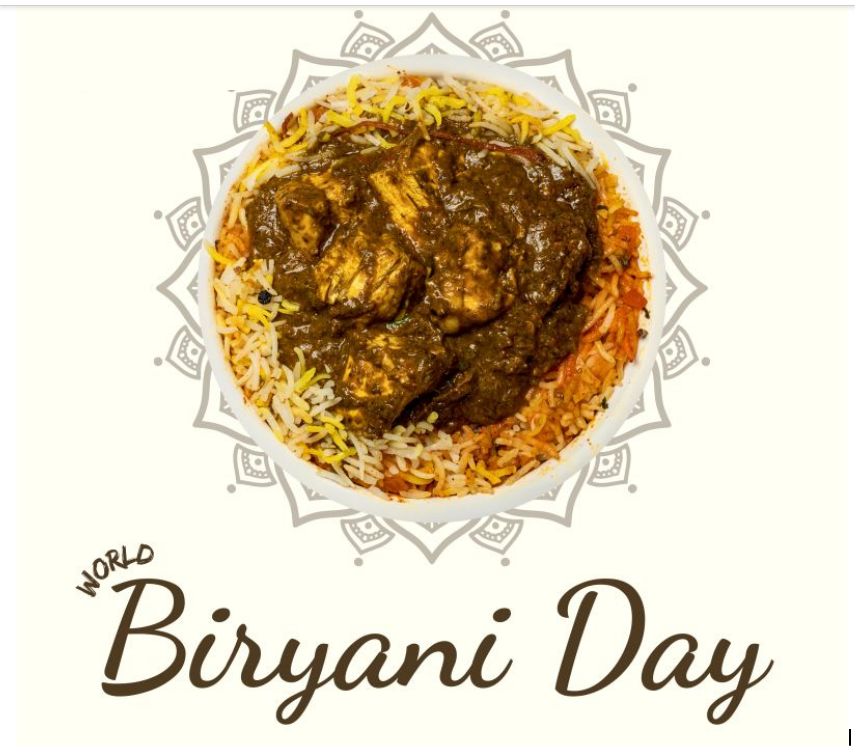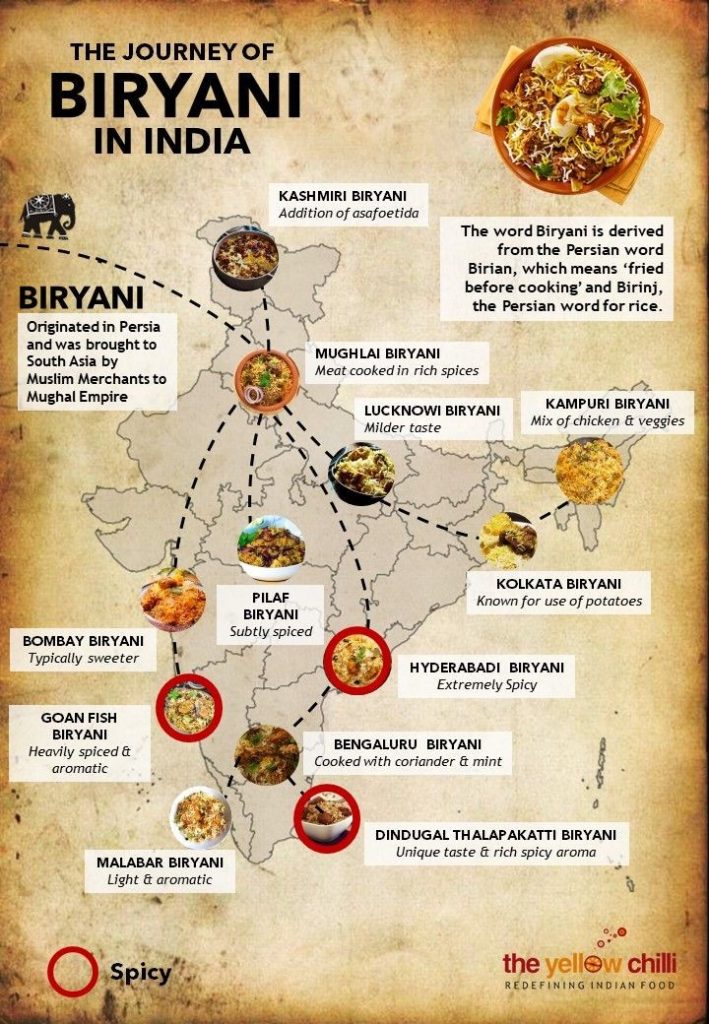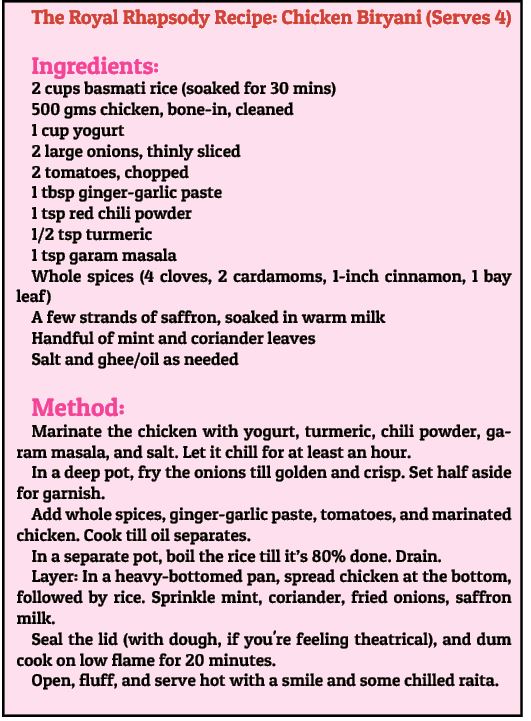Goa is abuzz with excitement as vintage bike and car owners, users, collectors and fans are decking […]

BIRYANI: Royal Rhapsody on a Plate Nutritional notes on World Biryani Day!By Dr Amit Dias
July 05- July 11, 2025, MIND & BODY, HEART & SOUL July 4, 2025Once in a while, the stars align, the spices sizzle, and the grains of rice come together in poetic harmony to create a dish so divine, it deserves its own national anthem. Introducing: Biryani — not just food, but a feeling, a fragrance, a festival in a pot. And what better day to celebrate this majestic marvel than on World Biryani Day, observed every year on July 7.
So, What Exactly is Biryani?
Biryani is the culinary equivalent of a blockbuster movie — big, bold, full of drama and guaranteed to leave you satisfied, yet wanting more. It is a layered rice dish where aromatic long-grain basmati rice waltzes with juicy pieces of meat, vegetables, or eggs, all spiced up and slow-cooked to perfection. The result? A symphony of texture, taste, and tantalizing aroma that defines mouthwatering perfection.
The History: A Dish With a Past as Rich as Its Gravy
The origins of biryani are as debated as the “pineapple on pizza” argument. Some say it came to India with the Mughals, others claim it has Persian roots, and a few even say that it was an emergency one-pot meal cooked up by busy soldiers. Whatever the case, by the time the Nawabs got their hands on it, biryani was wearing a crown and demanding a silver platter.
The name itself comes from the Persian words birian (fried before cooking) and birinj (rice). Over time, it picked up local accents, flavors, and fan clubs in every region of India.
Characteristics of a True Biryani
Not every rice dish is a biryani -here’s what sets it apart:
Aromatic basmati rice that’s been pampered and preened.
Whole spices — cardamom, cinnamon, cloves — whispering secrets of flavour.
Marinated meat or veggies, slow-cooked till they sing.
Layering: the drama of rice and masala playing hide-and-seek.
Dum cooking: where steam and patience create magic.
Fragrance that enters the room ten minutes before the biryani does.

Types of Biryani: One Name, Many Personalities
India takes its biryani very seriously — and regionally. Like cricket, politics, and mangoes, everyone has their favorite.
Hyderabadi Biryani: The reigning queen. Fiery, fragrant, and dum-cooked. Has a flair for the dramatic.
Lucknowi (Awadhi) Biryani: Softer, subtler, poetry on a plate.
Kolkata Biryani: Comes with potatoes. Yes, and we respect the decision.
Malabar Biryani: Coconut and curry leaves crashing the party.
Ambur Biryani: Tamil Nadu’s tangy tribute to taste.
Sindhi, Bohri, Mughlai, Kashmiri and even Bombay biryani — each with their own twist and loyal following.
Vegetable biryani: No, it’s not pulao in denial as some people may call it. When done right, it deserves its own standing ovation as the flavors make it stand out.
Goan Fish or Prawn Biryani: Yes we have our own version of biryani in Goa so we do not miss our seafood in the royal rhapsody.

The Great Biryani Debate: Which one is the best?
Mutton Biryani: Rich, regal, and not for the faint-hearted (or impatient).
Chicken Biryani: Friendly, forgiving, and always dependable.
Egg Biryani: The diplomat of the biryani world — goes with everything.
Vegetable Biryani: Lush, flavorful, and no longer the boring cousin.
Paneer Biryani: For those who like their biryani with a touch of tofu-like royalty.
Fish or Prawn Biryani: for those who like their seafood.
Nutritional Notes (For those counting calories between bites)
Biryani, when not drowned in ghee or over-fried onions, can actually be a balanced meal.
Pair it with raita, onion salad, or just a spoon and good company.

In Conclusion: A day for biryani, a biryani for every day
On World Biryani Day, let’s raise our spoons in reverence, dig deep into the pot of comfort, and celebrate this timeless dish that unites taste buds across the world. If you have a special biryani recipe or would like to recommend a place for the best biryani, feel free to write to the Goan Observer.
Because in the world of food, biryani reigns basmati-cally supreme !!















